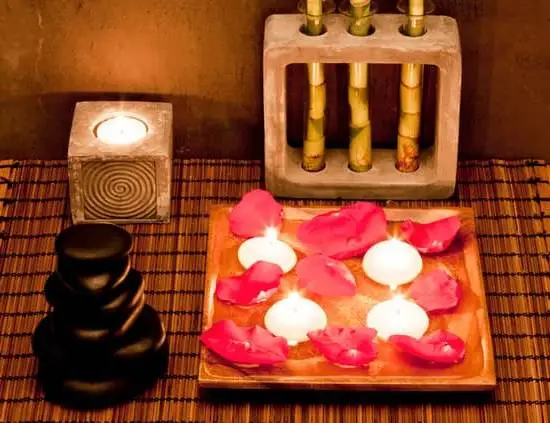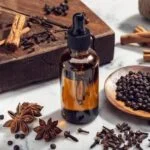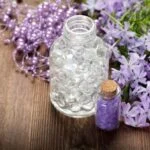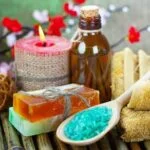Aromatherapy massage has become increasingly popular in the wellness industry, offering a holistic approach to relaxation and rejuvenation. This specialized massage technique combines the therapeutic benefits of touch with the healing properties of essential oils. In this article, we will delve into the world of aromatherapy massage, exploring its origins, benefits, and how it works to promote overall well-being.
Originating from ancient civilizations, aromatherapy massage has been used for centuries as a form of natural healing. The practice involves applying essential oils derived from plants to the skin, allowing their aromatic molecules to be absorbed into the bloodstream and provide various therapeutic effects. With its roots deeply embedded in history, this age-old practice has been seamlessly integrated into modern wellness routines.
The benefits of aromatherapy massage extend beyond mere physical relaxation. By combining gentle strokes with carefully selected essential oils, this specialized technique not only alleviates muscle tension and reduces stress but also promotes mental clarity and emotional well-being. As different essential oils possess distinct properties, each uniquely contributes to enhancing specific aspects of your overall health.
In the upcoming sections of this article, we will explore the fascinating history behind aromatherapy massage and trace its development throughout time. We will discuss the wide array of benefits that can be attained through this form of massage therapy and delve into how essential oils play a pivotal role in achieving optimal results. Furthermore, we will provide practical tips on choosing the right aromatherapy massage tailored to individual needs and even offer guidance on performing DIY techniques at home.
So join us on this enlightening journey as we unlock the wonders of aromatherapy massage and discover how it can ignite joy and harmony within your mind, body, and soul.
History of Aromatherapy
Aromatherapy massage has a rich history that dates back to ancient civilizations. The use of aromatic plant extracts and essential oils for therapeutic purposes can be seen in the traditions of many cultures around the world. In this section, we will delve into the origins of aromatherapy massage and explore how it has evolved over time to become a popular practice in modern wellness.
The roots of aromatherapy massage can be traced back to ancient Egypt, where aromatic plants were cultivated and used for both medicinal and cosmetic purposes. The Egyptians believed in the healing powers of plants and incorporated them into various aspects of their lives, including religious rituals and beauty treatments. They would use aromatic oils during massages to promote relaxation, relieve pain, and stimulate circulation.
In other parts of the world, such as China and India, similar practices involving the use of scented oils were also prevalent. Chinese traditional medicine often incorporated aromatic herbs and oils for their therapeutic properties, while Ayurveda in India utilized essential oils for balancing mind, body, and spirit. These ancient healing practices laid the foundation for what would later become known as aromatherapy massage.
Fast forward to modern times, aromatherapy massage has gained widespread popularity due to its numerous health benefits and its ability to enhance overall well-being. It is no longer limited to luxury spas or wellness centers but is now accessible to people from all walks of life. With scientific research confirming the efficacy of certain essential oils in promoting relaxation, reducing anxiety, alleviating pain, improving sleep quality, among other benefits, aromatherapy massage has become a sought-after treatment worldwide.
| Country/Region | Ancient Tradition | Key Use of Aromatic Oils |
|---|---|---|
| Egypt | Ancient Egyptian | Relaxation, Pain Relief, Circulation |
| China | Chinese Traditional Medicine | Balancing Mind and Body |
| India | Ayurveda | Mind-Body-Spirit Balance |
As we continue to appreciate the traditions of aromatherapy massage from ancient civilizations, it is evident that its integration into modern practices has allowed for a more holistic approach to wellness. By combining the therapeutic benefits of essential oils with massages, individuals can not only experience physical relaxation and relief but also mental and emotional well-being.
The history of aromatherapy massage serves as a testament to its enduring appeal and the timeless wisdom of using nature’s gifts for natural healing.
Benefits of Aromatherapy Massage
Aromatherapy massage offers a wide range of physical, mental, and emotional benefits that can greatly enhance one’s well-being. By incorporating the use of essential oils into the massage process, aromatherapy combines the healing power of touch with the therapeutic properties of natural plant extracts. This unique combination provides a holistic approach to relaxation and rejuvenation.
Physically, aromatherapy massage helps to relax and soothe muscles, relieve tension and pain, improve circulation, and promote better sleep. The gentle application of essential oils onto the skin during the massage stimulates the nerve endings and increases blood flow to alleviate muscle stiffness and soreness. Additionally, certain essential oils like lavender have sedative properties that can aid in achieving a deeper state of relaxation and improve quality of sleep.
Mentally, aromatherapy massage has been proven to reduce stress and anxiety levels while promoting mental clarity and focus. The aroma of essential oils directly affects the limbic system, which is responsible for regulating emotions and memory. When inhaled or applied topically, certain essential oils such as bergamot or chamomile can help calm the mind, ease tension, and uplift mood. The soothing touch combined with these calming scents creates a tranquil environment conducive to relaxation and stress relief.
Emotionally, aromatherapy massage nurtures emotional well-being by supporting balance within the body. Essential oils contain chemical compounds that can positively affect neurotransmitters in the brain. For example, rose oil releases endorphins associated with happiness and reduces cortisol levels linked to stress. Frankincense promotes deep breathing and spiritual connection by slowing down heart rate and lowering blood pressure. These emotional benefits not only provide immediate relief but also contribute to long-term emotional stability.
Essential Oils and Their Role
Introduction to Essential Oils
Essential oils play a crucial role in aromatherapy massage, as they are the key component that provides therapeutic benefits and enhances relaxation during the treatment. These oils are derived from various parts of plants, including flowers, leaves, stems, bark, and roots, through a process of distillation or expression. Each essential oil possesses its own unique properties and healing effects on the body.
The Healing Effects of Essential Oils
One of the main reasons why essential oils are widely used in aromatherapy massage is their ability to impact both physical and emotional well-being. The molecules in these oils are easily absorbed by the skin and can penetrate deeper layers to reach the bloodstream. As a result, they can trigger various physiological responses and promote overall health.
Different essential oils have different effects on the body. Some oils have analgesic properties and work as natural pain relievers, while others possess anti-inflammatory properties that aid in reducing swelling and inflammation. Certain essential oils also have antimicrobial properties that can kill or inhibit the growth of harmful bacteria and viruses.
Furthermore, essential oils have a powerful effect on emotions and mental well-being. When inhaled or applied to the skin during an aromatherapy massage session, these oils can stimulate brain chemicals related to mood regulation and relaxation. This can lead to stress reduction, improved sleep quality, enhanced mood, increased mental clarity, and overall emotional balance.
Choosing Essential Oils for Aromatherapy Massage
There is a wide variety of essential oils available for use in aromatherapy massage. When selecting which ones to use for your massage session, it’s important to consider your specific needs and preferences. Some popular choices include lavender for relaxation, peppermint for energizing effects or headaches relief; eucalyptus as decongestant; tea tree oil for its antibacterial properties, and chamomile to soothe muscle tension.
Additionally, it is essential to ensure that the essential oils you use are high-quality and pure. Look for oils that are labeled as therapeutic grade or organic to guarantee their potency and safety. It’s always recommended to consult with a professional aromatherapist or massage therapist for guidance on choosing the right essential oils based on your individual needs and health conditions.
How Aromatherapy Massage Works
Aromatherapy massage is a unique and specialized form of massage therapy that combines the benefits of traditional massage techniques with the healing properties of essential oils. In this section, we will take a closer look at how aromatherapy massage works, providing a step-by-step breakdown of the massage process, discussing the techniques used, and exploring the way essential oils are incorporated into the treatment.
The first step in an aromatherapy massage is creating a relaxing and soothing environment. This may include dim lighting, soft music, and comforting scents to enhance the overall experience. The therapist will then consult with the client to determine their specific needs and preferences, as well as any health conditions or concerns that need to be considered.
Once the client is comfortable, the therapist will begin with gentle relaxation techniques to help loosen tense muscles and prepare the body for deeper work. This may involve Swedish or effleurage strokes using long, gliding movements over the body. These initial techniques help to increase blood circulation, warm up the muscles, and promote relaxation.
As the massage progresses, specific aromatherapy techniques are employed. One common technique is called “aromatic inhalation,” where the client inhales essential oil molecules through their nose. This can have an immediate impact on mood and emotions due to olfactory receptors directly linking to parts of our brain responsible for emotion and memory.
Essential oils are also applied topically in combination with various massage strokes. Different oils are selected based on their therapeutic properties and desired effects. For example, lavender oil may be used for its calming and relaxing properties, while peppermint oil can provide a refreshing and invigorating sensation.
Throughout the treatment, different massage techniques such as kneading, friction, tapping (or percussion), and vibration may be used to address specific areas of tension or concern. The therapist will tailor these techniques based on individual needs while integrating essential oils seamlessly into each stroke.
By combining relaxation techniques with the healing properties of essential oils, aromatherapy massage provides a holistic and rejuvenating experience for both the body and mind. The techniques used, along with the incorporation of essential oils, work together to promote relaxation, relieve muscle tension, reduce stress, and enhance overall well-being.
Popular Essential Oils for Aromatherapy Massage
Aromatherapy massage utilizes a variety of essential oils to enhance the therapeutic benefits of the massage. These essential oils are derived from plants and possess unique properties that contribute to their healing effects on the body. In this section, we will introduce some commonly used essential oils in aromatherapy massage and explore their specific therapeutic properties.
1. Lavender Oil: Known for its calming and relaxing properties, lavender oil is often used in aromatherapy massage to relieve stress, anxiety, and promote restful sleep. It can also help soothe muscle aches and tension.
2. Peppermint Oil: With its refreshing and cooling sensation, peppermint oil is commonly used in aromatherapy massage to alleviate headaches and migraines. It can also provide relief from muscle pain, improve mental focus, and boost energy.
3. Eucalyptus Oil: Due to its strong antimicrobial properties, eucalyptus oil is frequently incorporated into aromatherapy massage for its ability to clear congestion, relieve respiratory issues, and support overall respiratory health.
4. Chamomile Oil: Renowned for its soothing properties, chamomile oil is often used in aromatherapy massage to promote relaxation, reduce inflammation, ease menstrual cramps, and improve digestion.
5. Tea Tree Oil: With its powerful antibacterial and antifungal properties, tea tree oil is commonly used in aromatherapy massage to treat skin conditions such as acne or fungal infections. It can also help boost the immune system.
It’s important to note that when using essential oils for aromatherapy massage, it’s crucial to dilute them properly with a carrier oil such as jojoba oil or almond oil before applying them to the skin. Additionally, individuals with certain health conditions or sensitivities should consult a qualified aromatherapist or healthcare professional before using specific essential oils.
In the next section, we will discuss how to choose the right aromatherapy massage based on individual needs and preferences, including considerations for health conditions.
Choosing the Right Aromatherapy Massage
Considerations for Health Conditions
When choosing the right aromatherapy massage, it is important to take into consideration any existing health conditions that you may have. Aromatherapy massages can have varying effects on different individuals, and certain essential oils may interact differently with specific health conditions.
For example, individuals with asthma or respiratory issues may want to avoid essential oils that are known to be stimulating or may cause irritation. On the other hand, individuals with anxiety or stress-related conditions may benefit from calming essential oils such as lavender or chamomile.
If you have any chronic health conditions or are pregnant, it is crucial to consult with a healthcare professional before undergoing an aromatherapy massage. They can provide guidance on which essential oils are safe and appropriate for your specific situation. Additionally, if you have sensitive skin or allergies, it is important to choose essential oils that are gentle and non-irritating.
Personal Preferences
In addition to considering health conditions, personal preferences play a significant role in selecting the best aromatherapy massage for your needs. Different scents can evoke different emotions and reactions in individuals. Some people may prefer floral scents like rose or jasmine, while others may prefer more earthy scents like patchouli or sandalwood.
It is also important to consider the intensity of the scent that you enjoy. Some essential oils have strong fragrances that can be overpowering for some individuals, while others may find them invigorating and refreshing. Experimenting with different scents and strengths can help you determine what works best for you.
Sensitivity Test
Before committing to a full aromatherapy massage treatment, it is advisable to conduct a sensitivity test by applying a small amount of diluted essential oil on your skin. This will help determine if you have any adverse reactions such as redness, itching, or irritation. It is best to perform this test at least 24 hours before your scheduled massage to allow sufficient time for any potential reactions to occur.
Taking the time to consider your health conditions, personal preferences, and conducting a sensitivity test will greatly assist in choosing the right aromatherapy massage. This ensures that you have a safe and enjoyable experience, tailored to your individual needs. Remember, communication with your massage therapist is key in order to ensure they understand your preferences and any specific concerns you may have.
DIY Aromatherapy Massage Techniques
Performing a DIY aromatherapy massage at home can be a wonderful way to relax, unwind, and promote overall well-being. While it may not offer the same level of expertise as a professional session, it can still provide numerous benefits and a satisfying experience. This section will provide a guide to performing a satisfying aromatherapy massage at home, including simple techniques and recommended essential oil combinations.
Before beginning the massage, it is important to create a calm and comfortable environment. Find a quiet space where you can lay down comfortably and dim the lights to create a relaxing ambiance. Prepare the essential oils you would like to use for your massage by adding them to a carrier oil such as sweet almond oil or jojoba oil. A popular combination for relaxation is lavender essential oil mixed with carrier oil, known for its calming properties.
To begin the DIY aromatherapy massage, start by applying a small amount of the prepared oil blend onto your fingertips. Gently rub your hands together to warm up the oil before starting the massage. Begin massaging your shoulders using circular motions with light pressure. Gradually work your way down the back using long strokes, focusing on any areas of tension or discomfort.
Next, move on to massaging the arms by using gentle kneading motions along the muscles from the shoulders down to the hands. Pay close attention to any knots or tightness in the muscles and use deeper pressure if desired. Repeat this process on both arms before moving on.
Finally, end the DIY aromatherapy massage by focusing on your feet. Apply some of the oil blend onto your fingers and use circular motions with varying pressure on the soles of your feet. You can also incorporate stretching and pulling movements with your fingers to help release tension in this area.
Remember that everyone’s preferences and needs are different, so feel free to experiment with different techniques and essential oil combinations until you find what works best for you. As always, if you have any health conditions or concerns, it is recommended to consult with a healthcare professional before attempting any DIY massage techniques at home.
Conclusion
In conclusion, it is evident that aromatherapy massage has gained significant popularity in the wellness industry due to its numerous benefits for overall well-being. This specialized massage technique traces its origins back to ancient civilizations and has seamlessly integrated into modern practices. Throughout this article, we have explored the history of aromatherapy, the benefits it offers, the significance of essential oils, and how aromatherapy massage works.
One of the key takeaways from this blog post is the various physical, mental, and emotional benefits that can be achieved through aromatherapy massage. Not only does it provide relaxation and stress relief, but it also promotes improved sleep quality, boosts mood and energy levels, reduces muscle tension and pain, enhances immune function, and supports emotional balance.
The healing effects of essential oils play a crucial role in these benefits, with each oil possessing unique properties that interact with the body in different ways.
Additionally, we have discussed how aromatherapy massage works by incorporating essential oils into the treatment process. From a step-by-step breakdown of the massage techniques used to an introduction of commonly used essential oils and their therapeutic properties, readers now have a comprehensive understanding of what goes into an effective aromatherapy massage. Furthermore, we provided tips on selecting the right type of aromatherapy massage based on individual needs and preferences.
Frequently Asked Questions
What Does an Aromatherapy Massage Do?
An aromatherapy massage is a type of massage therapy that incorporates the use of essential oils to enhance the therapeutic benefits of the massage. The essential oils are derived from plant extracts and are known for their various healing properties.
During an aromatherapy massage, the therapist will apply gentle pressure and soothing strokes to help relax the muscles and relieve tension. The added benefit of the essential oils may include promoting relaxation, reducing stress, improving circulation, boosting immunity, and providing a sense of well-being.
What Is the Difference Between a Normal Massage and an Aromatherapy Massage?
The main difference between a normal massage and an aromatherapy massage lies in the use of essential oils. While a normal massage focuses solely on manipulating the body tissues through pressure and strokes, an aromatherapy massage combines these techniques with the inhalation or topical application of essential oils.
The specific combination of oils used in an aromatherapy massage can be customized based on individual needs or preferences. This addition enhances the overall experience by incorporating aroma into the therapeutic process and potentially enhancing its effects.
What Does a Full Body Aromatherapy Massage Include?
A full-body aromatherapy massage incorporates all areas of the body, including back, neck, shoulders, arms, legs, feet, abdomen, and face. It is a comprehensive treatment that aims to provide relaxation and stress relief throughout the entire body. The therapist will apply rhythmic strokes and sometimes use techniques such as effleurage (long sweeping strokes), petrissage (kneading), or friction to target different muscle groups and promote relaxation.
Essential oils are typically used during this type of massage to further enhance relaxation and provide specific benefits tailored to individual needs. Clients may have different preferences regarding pressure intensity or focus areas during a full-body aromatherapy massage, which can be communicated with their therapist before or during the session for customization purposes.

Are you looking for a natural way to improve your health and wellbeing?
If so, aromatherapy may be the answer for you.





